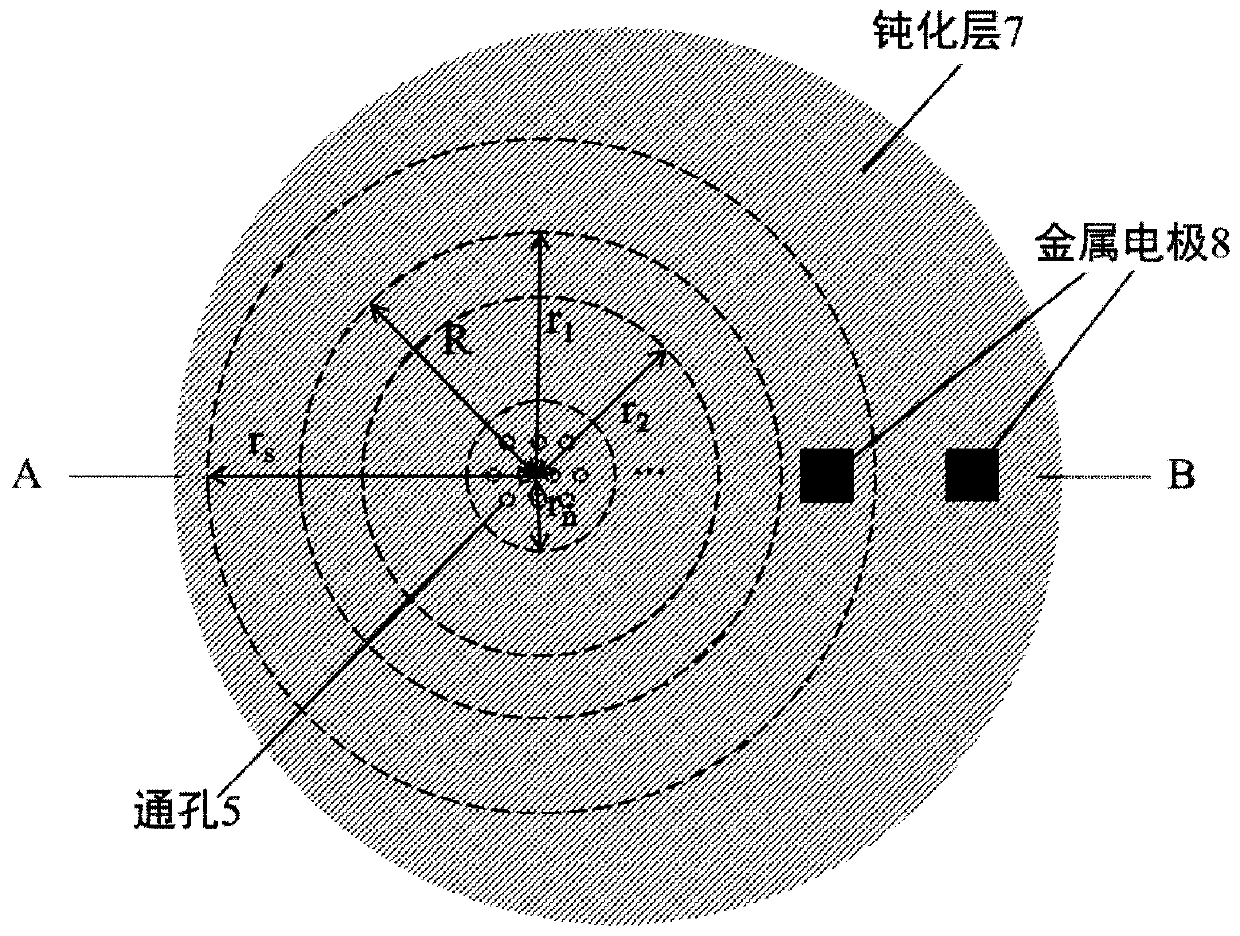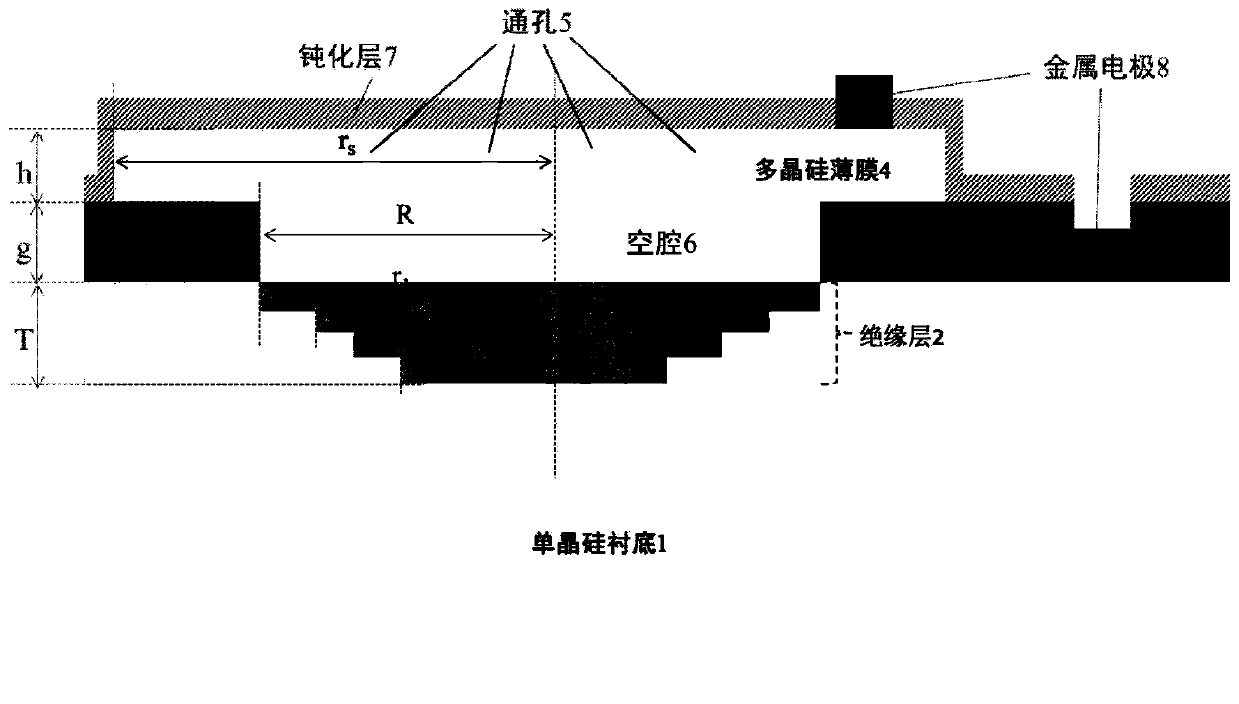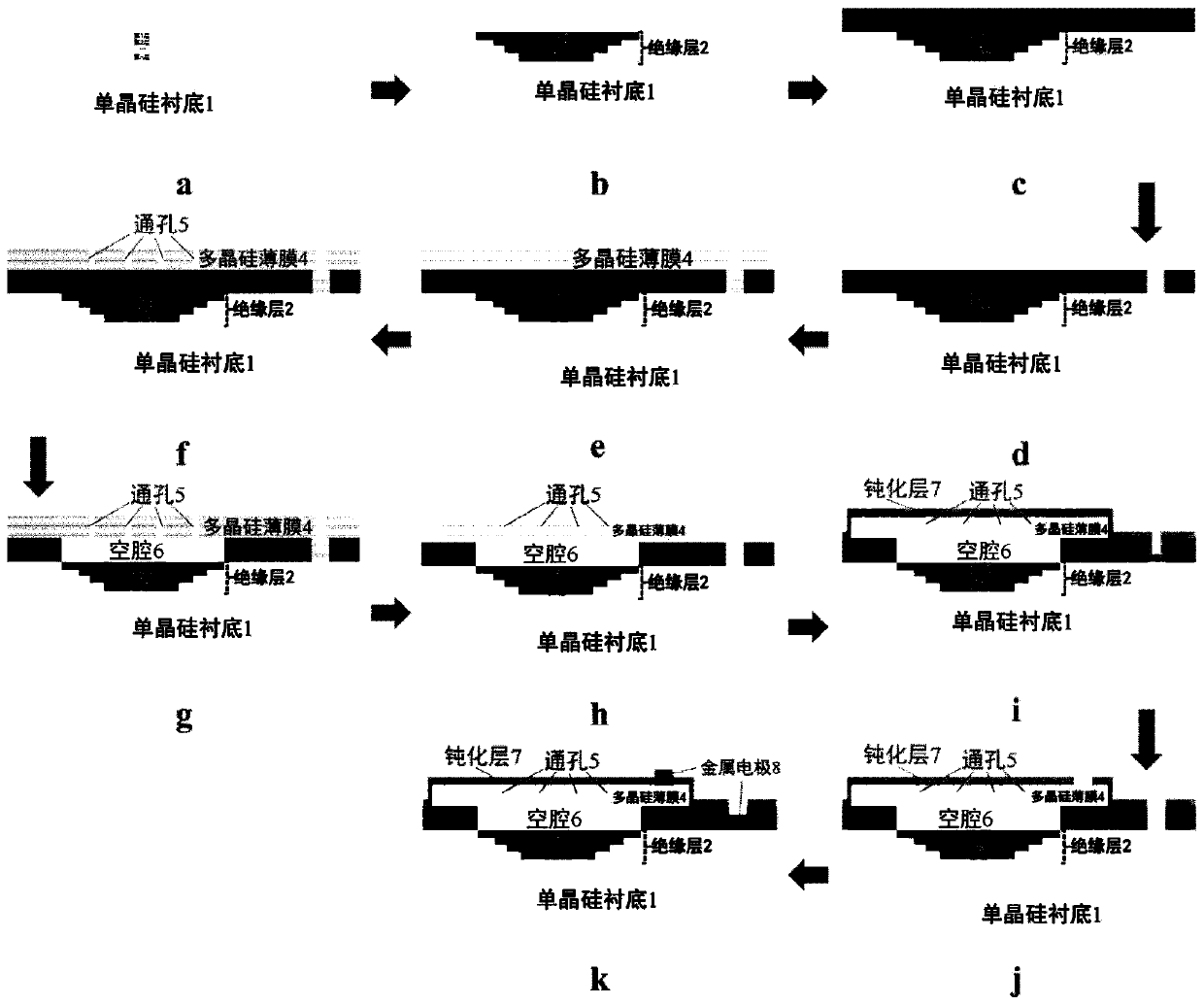Capacitive pressure sensor and manufacturing method thereof
A pressure sensor, capacitive technology, used in fluid pressure measurement using capacitance changes, piezoelectric/electrostrictive/magnetostrictive devices, televisions, etc. Large-scale pressure monitoring requirements, difficult process preparation and other problems, to achieve the effect of improving the linear range, high yield, and large linear range
- Summary
- Abstract
- Description
- Claims
- Application Information
AI Technical Summary
Problems solved by technology
Method used
Image
Examples
Embodiment 1
[0050] Example 1: Making the insulating layer as SiO 2 , the isolation layer is SiN, the passivation layer is SiN, and the number of insulating layers is N=2 capacitive pressure sensors.
[0051] Step 1, etch the single crystal silicon in the region of the two insulating layers on the single crystal silicon substrate, such as image 3 a.
[0052] 1a) Make a mask on a single crystal silicon substrate, using reactive ion etching technology, that is, on CF 4 Under the process conditions of flow rate of 15sccm, pressure of 10mT and power of 80W, etching thickness t is 125nm, radius r 1 is 100μm of the first layer of insulating layer area;
[0053] 1b) Make a secondary mask on a single crystal silicon substrate, using the same reactive ion etching process conditions as 1a), the etching thickness t is 125nm, the radius r 2 The second insulating layer region is 39 μm.
[0054] Step 2, depositing insulating layer dielectric SiO in the region of the N-layer insulating layer etched...
Embodiment 2
[0074] Example 2: Making the insulating layer as SiO 2 , the isolation layer is SiN, and the passivation layer is Al 2 O 3 , a capacitive pressure sensor with N=4 insulating layers.
[0075] Step 1, etch the single crystal silicon in the area of 4 insulating layers on the single crystal silicon substrate, such as image 3 a.
[0076] 1.1) Make a mask on the single crystal silicon substrate, use reactive ion etching technology to etch the first layer of insulating layer region, the thickness t of the first layer of insulating layer region is 0.1μm, the radius r 1 is 250μm;
[0077] 1.2) Make a secondary mask on the single crystal silicon substrate, use reactive ion etching technology to etch the second insulating layer region, the thickness t of the second insulating layer region is 0.1 μm, and the radius r 2 is 123 μm;
[0078] 1.3) Make three masks on the single crystal silicon substrate, use reactive ion etching technology to etch the third insulating layer region, t...
Embodiment 3
[0102] Example 3: Making the insulating layer as SiO 2 , the isolation layer is SiN, and the passivation layer is HfO 2 , a capacitive pressure sensor with N=5 insulating layers.
[0103] Step A, etching the single crystal silicon in the area of 5 layers of insulating layers on the single crystal silicon substrate, such as image 3 a.
[0104] First, make a mask on the single crystal silicon substrate, and use reactive ion etching technology to etch the first insulating layer region. The thickness t of the first insulating layer region is 0.16μm, and the radius r 1 is 500μm; then a secondary mask is made on the single crystal silicon substrate, using reactive ion etching technology, the etching thickness t is 0.16μm, the radius r 2 The second insulating layer area is 260 μm, and then three masks are made on the single crystal silicon substrate, using reactive ion etching technology, the etching thickness t is 0.16 μm, the radius r 3 It is the third insulating layer area ...
PUM
| Property | Measurement | Unit |
|---|---|---|
| thickness | aaaaa | aaaaa |
| radius | aaaaa | aaaaa |
| height | aaaaa | aaaaa |
Abstract
Description
Claims
Application Information
 Login to View More
Login to View More - R&D
- Intellectual Property
- Life Sciences
- Materials
- Tech Scout
- Unparalleled Data Quality
- Higher Quality Content
- 60% Fewer Hallucinations
Browse by: Latest US Patents, China's latest patents, Technical Efficacy Thesaurus, Application Domain, Technology Topic, Popular Technical Reports.
© 2025 PatSnap. All rights reserved.Legal|Privacy policy|Modern Slavery Act Transparency Statement|Sitemap|About US| Contact US: help@patsnap.com



